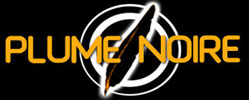
|
|
Rebecca Romijn-Stamos plays femme fatale Laura Ash, a manipulative and dangerous beauty sailing in troubled waters in which a paparazzi (Antonio Banderas) gets stuck. A sort of cinematic gumbo, Femme Fatale mixes genres (film noir, Hitchcock, erotic and art-house) and themes (the ideas of déjà-vu, destinies crossing paths, doubles, voyeurism as well as clichés). The film is clearly a visual departure from its predecessors, as aesthetics here are relegated to the background to better concentrate on the screen-writing "tricks". Nonetheless, one again sees De Palma's taste for meticulous openings scenes during the diamond theft at the Cannes festival, where the scene is played out during a precise and intense musical score inspired by Ravel's "Bolero". Femme Fatale establishes itself as a turning point in the filmmaker's career. Initially it's a new departure, the transition between the United States and France (the director's new adopted country) that's present onscreen in various forms. Beyond the action taking place in Paris, noticeable is the presence of the American ambassador in Paris, a reference to his status as an "American director" installed in the French capital, as well as the screening of Régis Wargnier's film, [Est]Ouest, which invades our screen with its revealing title. Femme Fatale also has a recapitulatory function through the presence of recurring topics in de Palma's work. Voyeurism is omnipresent here, from the control screens that recall Snake Eyes to the paparazzi armed with their cameras, reminiscent of Body Double and Blow Out. The director also has fun with the "double" theme, which he tackled in Body Double and Raising Cain. As for the destinies crossing, a leitmotiv also found in Krzysztof Kieslowski's cinema (The Double Life of Véronique), here Véronique is renamed Laura Ash. De Palma's only goal is to have fun with this Femme Fatale and his film is addressed to serious cinephiles and his peers. Shooting during the Cannes Film Festival and the presence of personalities like Régis Wargnier and Sandrine Bonnaire show the introspective implication of his project. Most of the public and armchair critics will be fooled by the film's second degree. De Palma pays homage marked with self-derision to films of the genre. With this intention, he excessively embraces their traits and their defects from the medallion to the déjà-vu posters, showing the guilty pleasure these films provide. He uses the intentionally grotesque tricks of the trade and proclaims his love. Some will also decry the higher bid for eroticism at the doors of vulgarity. However, in the provocative sway of this manipulative woman's walk one sees the incarnation of a cinema that uses easy (or vulgar) tricks to pique the audience's interest. The scene in the seedy bar obviously returns to the vulgarity of erotic films while the role reversal underlines by a pompous soundtrack translates into the tricks used to entice us since the early days of the thriller genre. If Femme Fatale seems like a superficial film with simple dialogue, caricatured characters and unequal casting, it is precisely that the film likens itself to that which it mocks, showing off as an erotic Hitchcockian soap opera that flirts with press "people". The process is daring but dangerous, since De Palma takes a risk by following the example of Paul Verhoeven in Starship Troopers and Showgirls: to be accused of perpetrating the very thing you're making a satire of. Like the paparazzi with whom he identifies, the filmmaker treats himself by providing us a series of clichés stuck to each other to form a manufactured fresco. This metaphorical reproduction of the cinema, descended from a divided vision, is inspired by the famous collages of photographer David Hockney (see the last shot of the film).
|
|

